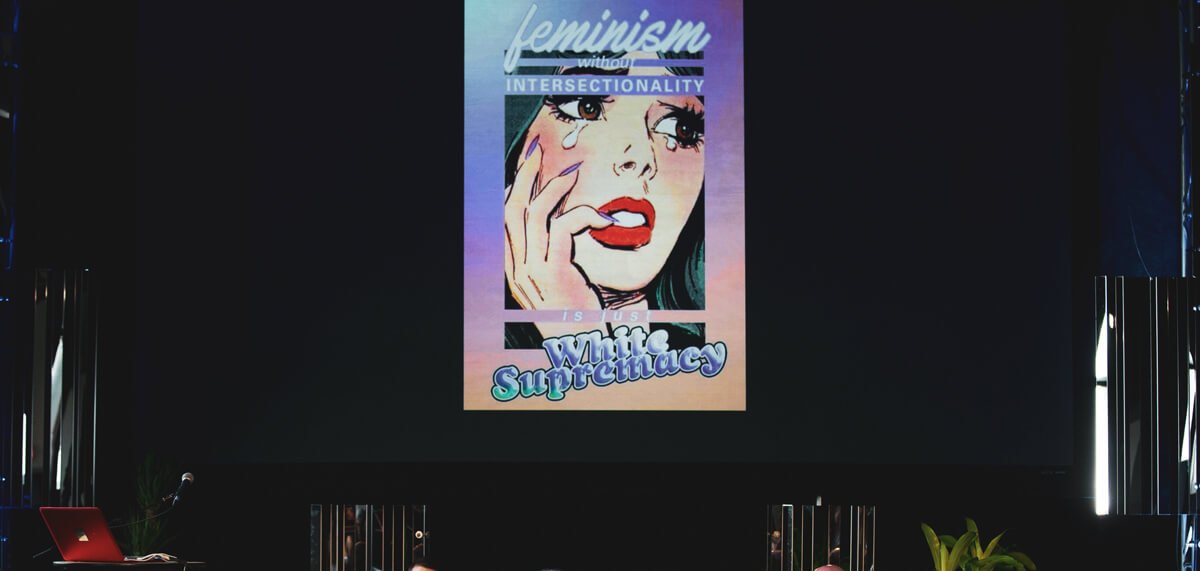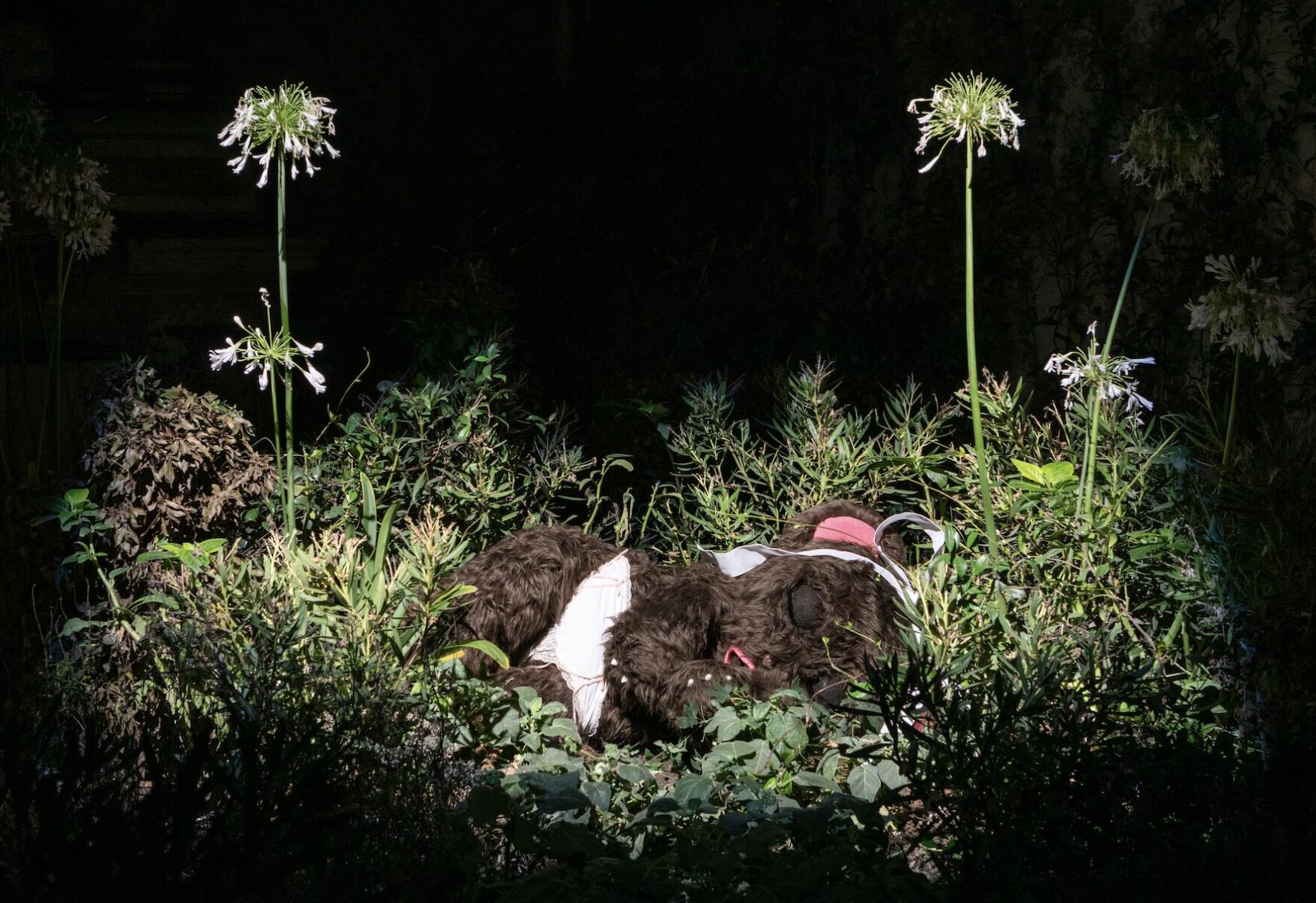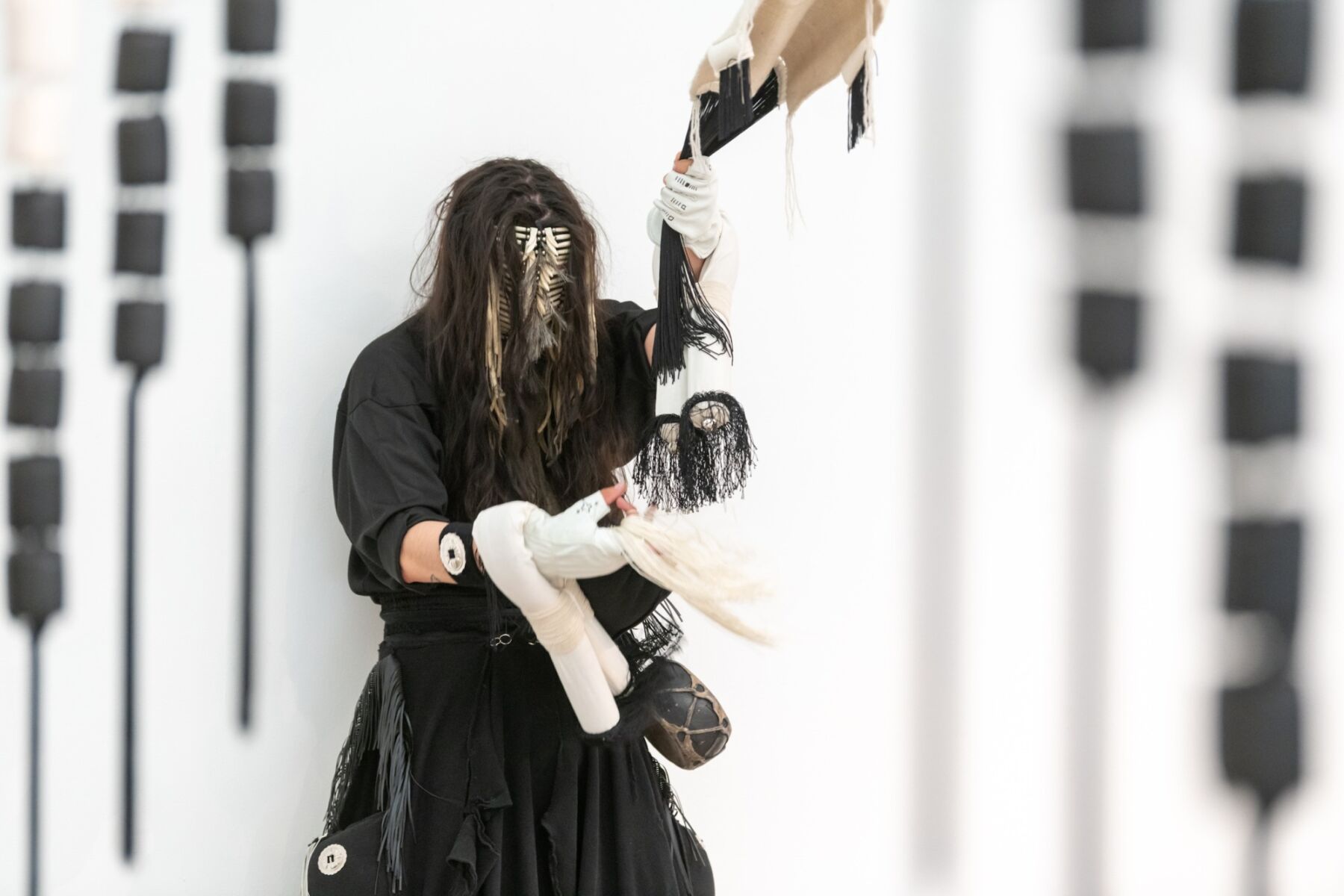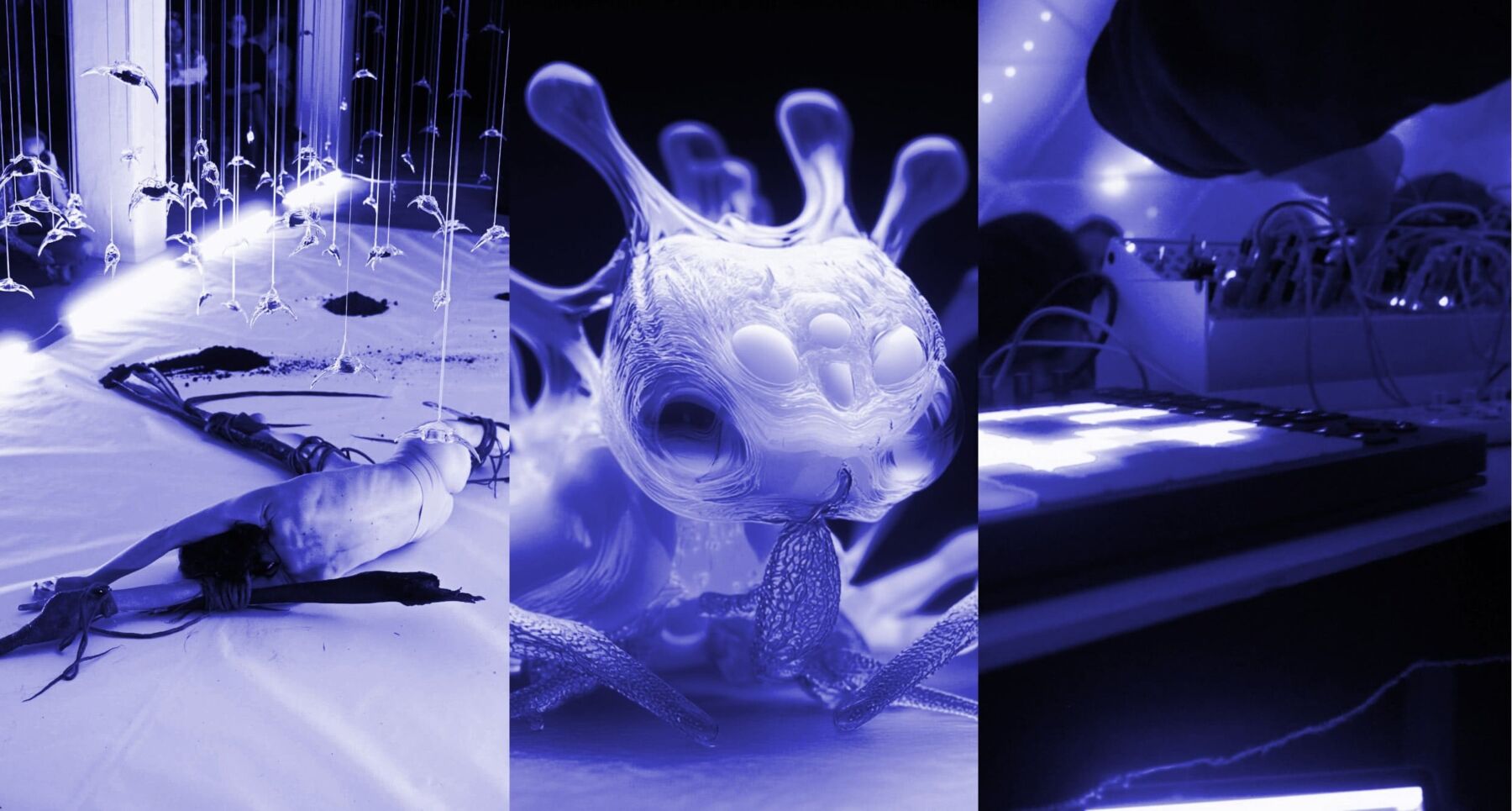Interview by Polly Bindmann
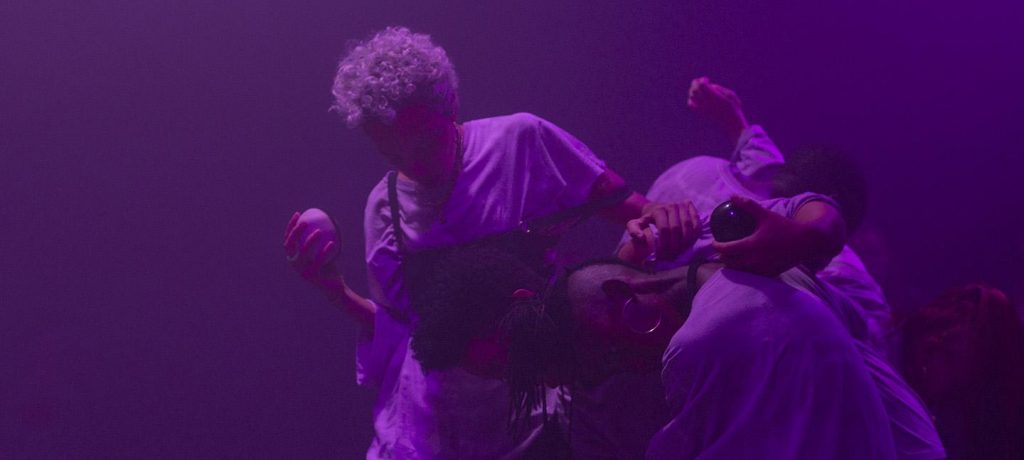
Marie McPartlin is the current director of Somerset House Studios, a space that exists as a progressive counterpart to the much older neo-classical building that is Somerset House. McPartlin’s impressive oeuvre is diverse – she has worked across music, heritage, literature, visual art and performance. Her background is music; McPartlin started her career with the Mean Fiddler Music Group, after which she became Live Music Programmer at the Spitz venue in London in 2006. Since, her practice has expanded to curation, working with institutions including Frieze Music, the National trust, Roundhouse, London Word festival and, for two consecutive years, acting as the festival director for the Kinsale Arts Festival in Ireland.
McPartlin has been the director of Somerset House Studios since its inception in 2015. Its tagline is that it is a new experimental workspace connecting artists, makers and thinkers with audiences. What this doesn’t adequately express is the value that this institution brings to the London art world, a city that distinctly lacks enough affordable creative studio spaces for artists.
Given that Somerset House is a British historical institution, the fact they are housing a progressive new space that promotes the interdisciplinary work of experimental artists signals that the establishment is recognising that we are entering a new era of creativity – where art is interdisciplinary, inclusive and participatory.
The Somerset House Studios commissions work and support emerging artists, and as director McPartlin has been vocal about the fact that it is centred around creating a community where residents are encouraged to support one another and learn from their vastly disparate practices. Its residents, who include architects, club night promoters, musicians and visual artists, share spaces across disciplines, encouraging the creation of exciting new breeds of work.
Notable recent experimental residents include Jenna Sutela, an artist whose project nimiia cetii uses machine learning to create a new language, using bacteria that is taken to space to test living conditions and scripting its movement through a microscope.
Another is Hannah Perry, who makes video installations and sculptures. Inspired by growing up in a family of welders, Perry explores masculinity as an ethos to represent power, which in her installation, Gush manifests through a fascination with car culture and the mechanics of a car. Suspension systems as shock absorbers are interpreted through the lens of toxic masculinity and taboos around trauma are conceptualised through the idea of traumatised metal and the car body as fetishised male objects.
With Mcpartlin in the realm, Somerset House has entered an age of artistic dynamism with force, where boundaries between different practices have been dismantled by the creative vision of its resident artists.
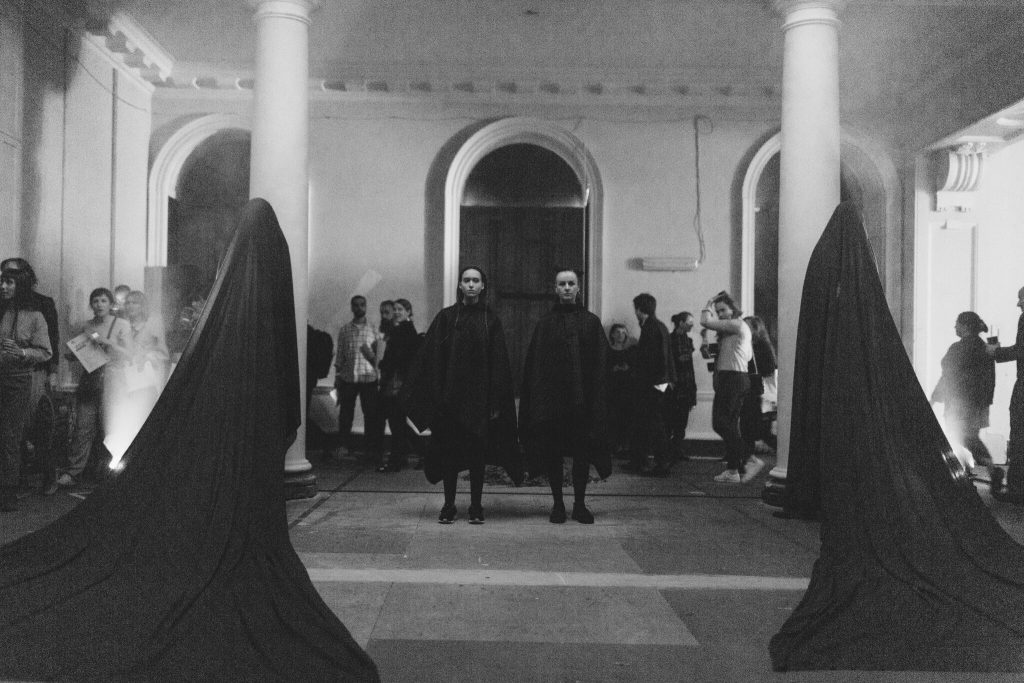
You are a producer working across music, literature, visual art, heritage and performance with a focus on technology. How and when did the interest in all these disciplines come about?
An old CV comes back to haunt me. My background is a bit weird, but it makes sense to have ended up where I am now. I started in music. Ran the programme at a music venue called the Spitz in east London for a while, which had a remit to be experimental and was a great platform for moving beyond just booking unsigned bands, which is where I started. I co-founded something called London Word Festival at that time, which ran for 5 years after receiving a Paul Hamlyn Breakthrough Award, and ended up working with people like Alan Moore, Iain Sinclair, Stewart Lee, and Saul Williams. But I always kept the music side of things going throughout that – which more often paid the rent – working with Barbican Contemporary Music, Sydney Festival and Frieze Music.
LWF was very research-based and excavated odd spaces in east London to stage lit nights that weren’t just book readings that sort of explored the idea of a living essay. In 2013, I made a break to live by the ocean and run a festival on the south coast of Ireland, commissioning a number of large-scale installations from artists like Heather and Ivan Morison and Something and Son, who just launched Peckham Palms. The town had no infrastructure for presenting work. Instead, I worked with the landscape, using the harbour and churches and working on a huge star-shaped bastion fort.
I guess exploring the relationship between architecture, history, and experimentalism has always been present in the projects I’ve taken on. I’m interested in that tension between preservation and creation. Somerset House Studios is a dream gig, can’t imagine anywhere else all those seemingly disparate choices would have made sense, supporting experimental work across disciplines in the former Grade 1 listed Inland Revenue offices. If you’re interested in progressive work and discuss ideas with artists everyday, working with emergent technologies is also inevitable really, but a love of JG Ballard maybe fueled that curiosity early on.
You are the director of the Somerset House Studios residency space and programme at Somerset House in London, which since 2015 has been growing an exponential success and the number of artists researching and collaborating together. What was the main aim behind its inception, and how has it evolved over these 3 years?
When we set out, the volume of artists’ studios in London was in rapid decline, and many buildings offering studio provision were on short-term leases or occupying temporary space. This decline has apparently stabilised, but we still don’t see rent controls or longer-term leases being offered for this sort of use. The Studios were set up to put artists, making and messiness back in the centre of the city. Somerset House is a government-owned building, which means we can offer artists rent-controlled space for a fixed period of time, that security can be hard to find. We also wanted to respond to the new ways in which artists were working, which don’t always require a huge volume of space in order to create.
Some of our residents don’t even occupy physical space. A neoclassical building on the Thames has a certain draw, of course, but you realise quickly that the community and wider network have the greater (and longer-term) value. Artists get work – new presentations, commissions, teaching – in a highly networked way. It’s very precarious, and a hub like the Studios not only provides connection and support, it brings more opportunities to the collective because of the volume of artists we represent through new audiences, partnerships with other organisations and institutions, and by attracting funders.
As Director, I’ve tried to make representation, radicalism and community central. I hope we continue to build on that foundation whilst growing the scale and ambition of the projects we produce.
And what have been the main challenges to pushing forward a project like this?
The team and I have had a lot more creative freedom with the project than I ever would’ve anticipated within an institutional context. For me, it was important to involve radical artists from the very start, knowing they’d be critical of Somerset House, its history, and its structures. I don’t think every institution would be so open to that. The Studios is like a start-up, things are being figured out as we go, but with around 80 people with a vested interest in its success on that journey with us, they all have opinions about how and what we should be offering.
The artists have very individual needs and different expectations about what you can or should be to them. That’s been the biggest challenge, and it’s ongoing. But I’m grateful to everyone who said what they thought even when it was hard to hear because it shaped things, and it shaped who’s here, I’m very proud of who we have the privilege to work with. The alternative could’ve been something ten years in the planning to arrive at a homogenised, institutional idea of what artists need, dictated from the top down. It feels like at least some of it we’ve arrived at together.
What can we expect from Somerset House Studios this year ahead of us?
Less in terms of programming in the short term. 2018 was insane, and we want to focus more on artist development this year, so we’re not announcing anything new until May. But we are working with Mutek festivals in Montreal, Buenos Aires and Barcelona on their Amplify initiative, a network of women-identified artists and curators working in the digital arts and electronic music, which launched last year to promote access, inclusion and gender equality within the industry.
We’ll be hosting ten artists in residence in June from Canada, Peru, Argentina and the UK, and curating a weekend that will present some of the most exciting artists from the Americas in the UK for the first time, as well as introducing some new faces closer to home to the Studios community.
Apart from Somerset house studios, what other projects are keeping you busy at the moment (if there’s time left)?
I’m currently navigating a recent move to South London (a big deal for a London girl), and I’m having a baby in July, so at this point, not sure I’ll have time for anything non-Studios-related activity ever again! But we’re guest curating the Wysing Arts Centre music festival this year1, which is a huge honour for us, and speaking about our involvement with Amplify at Mutek Barcelona in March. I’m also learning Spanish, so aiming to conjure at attempt the intro en Español, veamos, and planning to spend a few months in Galicia after the summer.
1 Somerset House Studios, together with Wysing Arts Centre, are commissioning an artist to undertake a residency this summer to create a new film work on the theme of connection. More info: www.somersethouse.org.uk/somerset-house-studios-x-wysing-arts-centre-residency
What is the new technological advancement you are most excited to see how artists either use it or reinterpret it?
Two of my favourite works we’ve commissioned at the Studios so far – Jenna Sutela’s installation nimiia cetii, and Jennifer Walshe’s ULTRACHUNK performance – explore machine learning, both in collaboration with the singular Memo Akten. These works subverted my own expectations of what the end result of a ‘machine learning artwork’ might look or sound like – weird, avantgarde, full of the artist’s character – and I’m keen to see how we might explore that technology with the dance or performance artists we work with in the future.
Also, quite a few Studio artists have been invited to undertake residencies at MONOM’s 4D spatial sound system in Berlin over the last couple of years. We’re intrigued by the potential of spatial sound and currently exploring its structure as a context for commissioning new sound and music work later in the year.
What would be your biggest curating extravaganza?
There’s a derelict 1930s lido in Talair, Aberdeenshire, I was involved with briefly. It has two pools and an Art Deco pavilion staring down the North Sea. A series of residencies there with Gregor Schneider, Demdike Stare, Hito Steyerl, Klein and the Bulgarian State Television Female Vocal Choir, with a massive wrap party and all the Studios gang in attendance.
Your chief enemy of creativity?
‘Visitor figures’. Someone took a risk, and five people turned up, and none of them got it, but later it changed everything. That’s always been integral to creativity, and a lot of that is lost in the way public funding structures have evolved.
You couldn’t live without…
Trello, Daniel Clowes, Atlas Obscura and currently Le Mystère Des Voix Bulgares volume 1, which Huw at the Studios introduced me to and I’ve been listening to on repeat ever since.

